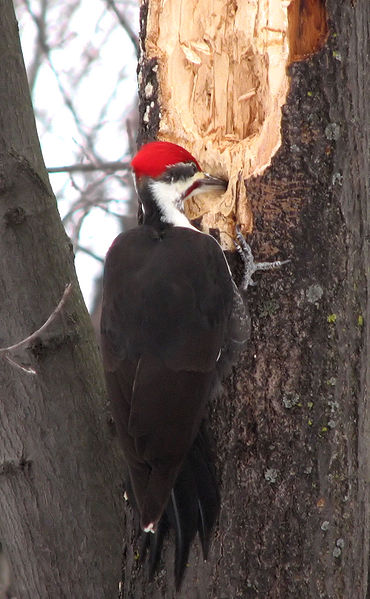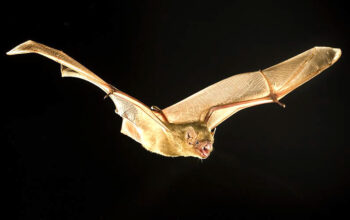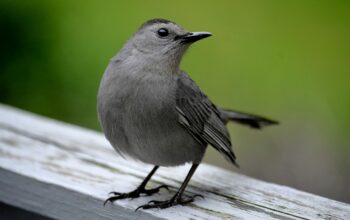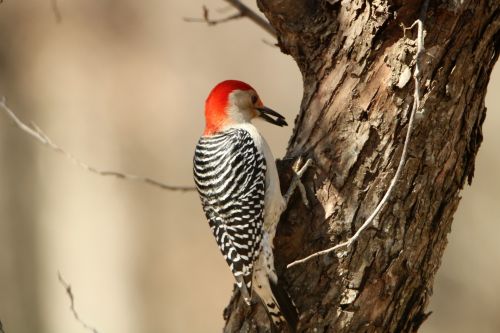
If you’re a bird-watcher, or just a casual bird-observer, you have no doubt spotted woodpeckers around Covington. Not only are these birds very common in our area, they are also easily recognizable, whether it be for its bright red head, its odd perch hanging off the sides of trees, or the distinctive sounds of its jackhammer-like pecking.
Woodpeckers are part of the family Picidae and can be found over most of the world. There are three species of woodpeckers that can most often be found in south Louisiana; the red-bellied woodpecker, the red-headed woodpecker, and the pileated woodpecker.
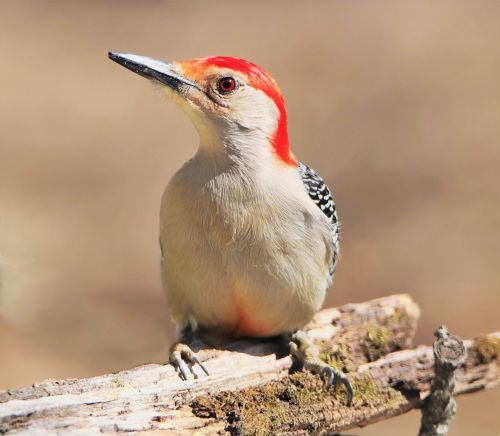
The red-bellied woodpecker (Melanerpes carolinus) is probably the most common here in Covington, and can be spotted quite regularly on oak trees and telephone poles. A smaller bird, averaging about 10 inches and 2 ounces, it has black and white speckled back back and wings, similar to its cousin the ladder-backed woodpecker of the west. The re-bellied woodpecker has a pale chest with hints of red and yellow and a bright red cap. This woodpecker has adapted well to urban life and can often be seen at backyard feeders.
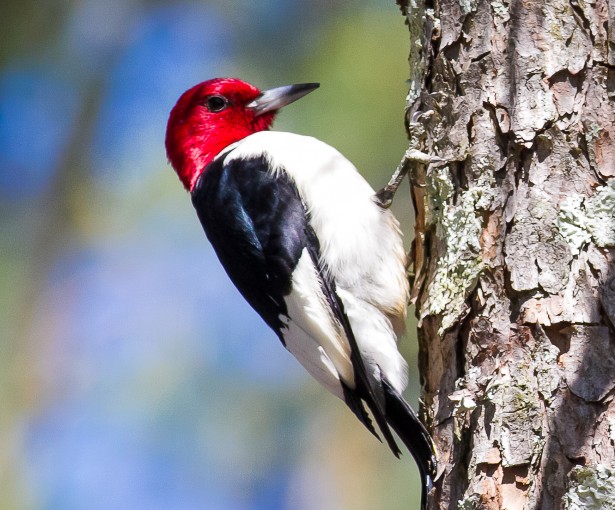
Slightly less common is the red-headed woodpecker (Melanerpes erythrocephalus), similar in size and often confused for the fore-mentioned. Note the red covers its entire head, hence the name. It also lacks the speckled pattern of the red-bellied woodpecker, having a solid white body and mostly black back with white patches on lower wings. The red-headed woodpecker was at one time listed as near threatened on the International Union for Conservation of Nature’s Red List, with a significant decline in population due to loss of habitat. It was downlisted to least concern in 2018. These birds fly-catch most of their prey and can often be spotted swooping erratically through the air.

The pileated woodpecker (Dryocopus pileatus) is the 2nd largest, if not possibly largest* woodpecker in the US, measuring an average of 18 – 20 inches long with a wingspan of 26 – 30 inches. It bears similar markings to the red-headed woodpecker with the exception of an elongated red crest from which it gets its name, pileatus being Latin for “capped”.
The pileated woodpeckers’ favoring of mature woods and shy nature makes it rather hard to spot – however the loud drumming from its powerful beak in unmistakable. Most often to proclaim territory, the pileated woodpecker will seek hollow wood, utility poles and even metal or tin for loud, quick bursts of 11 to 30 taps in less than a second. They will chip out large, usually rectangular holes in the tops of old trees searching for insects. The pileated’s home is a large nest in the cavities of dead trees in which it will raise its young to maturity, and then abandon to create a new nest next season. It is considered to play an important role in ecology as many other species of birds and mammals depend on these abandoned nests for homes.
Listen to pileated woodpecker drumming: https://en.wikipedia.org/wiki/File:Dryocopus_pileatus-Pileated_Woodpecker-_XC71727.ogg
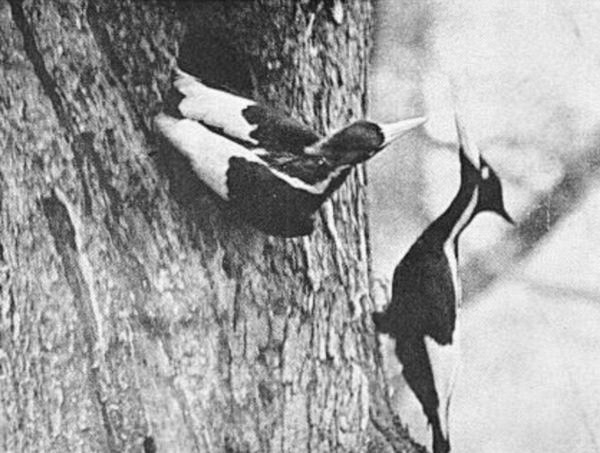
*The largest woodpecker in the US and one of the largest in the world is the critically endangered and possibly extinct ivory-billed woodpecker (Campephilus principalis). Averaging 19 – 21 inches with a typical wingspan of 30 inches, the last universally accepted sighting occurred in Louisiana in 1944. It is closely related to the slightly smaller Cuban ivory-billed woodpecker (Campephilus bairdii) and the Mexican imperial woodpecker (C. imperialis), the largest woodpecker in the world. The imperial woodpecker measures 22 – 23.5 inches long and is also on the critically endangered list.
Unlike its close relatives, the pileated woodpecker is highly adaptable and has actually seen an increase in population from 1966 to 2015.
More Fun Facts About Woodpeckers
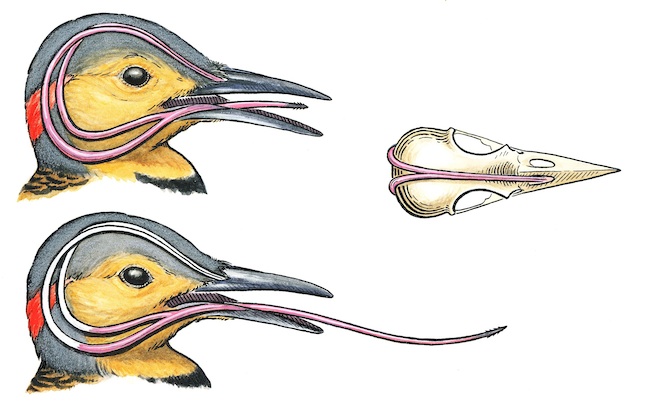
Woodpeckers have exceptionally long tongues for foraging insects from deep inside trees. The tongue when retracted wraps around the bird’s skull. This and additional cushioning in the brain helps to protect the bird from any damages that might occur to the brain due to its aggressive pecking.
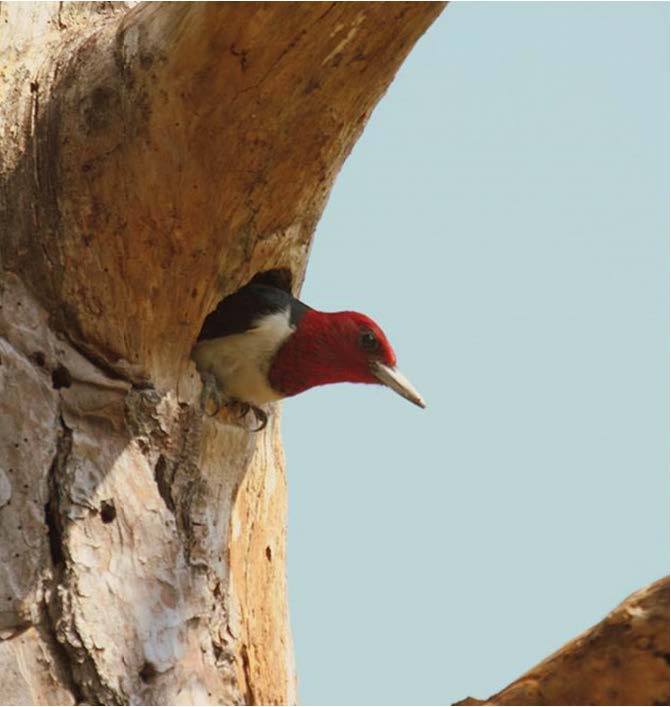
Most woodpeckers exhibit what is called undulated flight – a few rapid wing beats followed by a glide where the wings are pulled into the body rather than spread out as most birds do. This gives the appearance of a sporadic up-and-down flight pattern.
The woodpecker does not have a distinctive song but rather communicates with chirps, chatters, calls and drumming. A woodpecker can drum up to 20 pecks per second and averages 8,000 to 12,000 pecks per day.
References:
https://www.allaboutbirds.org/guide/Red-bellied_Woodpecker/overview
https://www.allaboutbirds.org/guide/Red-bellied_Woodpecker/id
https://www.audubon.org/field-guide/bird/red-headed-woodpecker
https://en.wikipedia.org/wiki/Red-headed_woodpecker
https://en.wikipedia.org/wiki/Pileated_woodpecker
“Pileated Woodpecker Dryocopus pileatus”. Patuxent Wildlife Research Center. U.S. Geological Survey. https://www.mbr-pwrc.usgs.gov/bbs/tr2015/trend2015_v3.html
https://www.thespruce.com/fun-facts-about-woodpeckers-387095

